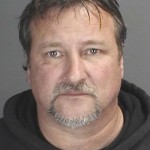The post below first appeared at Daily Adams. Although the Center from Public Integrity’s Bill Buzenberg has led a journalism non-profit, many of the principles he enumerates would apply as well in for-profit journalism, or other professions by adoption. It’s astonishing how far from these standards, for example, the local press in Whitewater truly is. (That’s the local press such as it is, and such as it pretends to be.)
Below, in the original post, Bill Buzenberg describes how it should be:
Original post:

As Bill Buzenberg steps down as executive director of the Center for Public Integrity, he takes leave by offering ten tenets of his organization. A better statement of journalistic principles one is unlikely to find.
Best wishes to Mr. Buzenberg.
Here, in full, the precious gift he leaves his organization, and others by inspiration:
Ten tenets for the Center for Public Integrity
- We are first and foremost investigative journalists. Although we do research and we think hard about our work which can extend over many months, we are not primarily a research center or a think tank devoted to information gathering.
- Because public integrity is part of our name, we adhere to the highest journalistic standards of ethics, accuracy and excellence. We principally pursue issues that have an important public integrity component. We seek to fight corruption with facts and transparency.
- We are editorially independent as a news organization and we stoutly resist interference of any kind, whether from funders, government, corporations or individuals. We welcome feedback and criticism from anyone, but we make our own editorial decisions about what projects to tackle and how our work is to proceed, operating with a firm firewall between editorial decision-making and financial considerations.
- We are a non-partisan, non-advocacy investigative organization. We seek to launch our investigative projects especially in areas where other news organizations are not looking. Although we don’t editorialize in our work, we do stand for a robust and accountable democracy.
- We believe investigative journalism represents the highest level of professionalism and the profession. Where other news organizations may simply pass on opinions or rumors gathered elsewhere, we know that is not investigative journalism and we will not do that. The Center for Public Integrity has tremendous credibility built on a record of 25 years of solid reporting, searching for data and documents, and then analyzing, sifting and weighing this information carefully before making it public.
- Content is king and we seek to be multi-platform in all of our work. Whatever platform we use, careful editing, and painstaking fact-checking are critical to our credibility and our success.
- We believe in the highest level of computer assisted reporting (CAR), but we also know that data alone is not sufficient for our reports. Our strongest work will consist of focused reporting AND computer generated data. Some of our reports will start with the data, or be built on data or documents, while others will start with old-fashioned shoe-leather news gathering and reporting, and data or documents will be added later.
- We seek multiple funding streams for our work from foundations, individuals, members, sales to other news organizations, and other appropriate earned revenue sources. We seek the widest possible dissemination for our work and where possible a return to cover the cost of production. No matter what the funding source, however, we will operate at all times in a manner consistent with these ten tenets and the firewall described above.
- We believe news is a public service, not a profit center. Public service is the very soul of the journalism profession. To us, news is not just a commodity or a business, it is also part citizen education, part moral enterprise. We seek to provide the kind of news people need to be informed citizens in a democracy.
- We believe that our long term credibility and respect are built on the value we create and the information we provide. Credibility and respect are worth more than short term popularity and glamour. We also know that the First Amendment comes with enormous responsibility to serve the public and that, not financial gain or even award recognition, is our reason for being.

